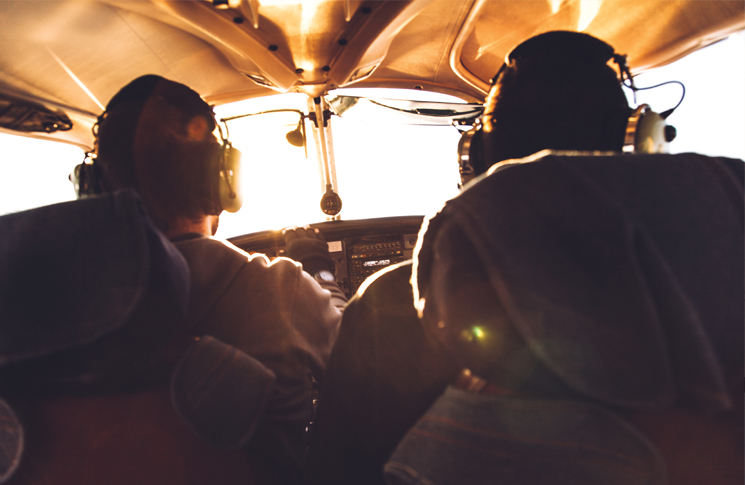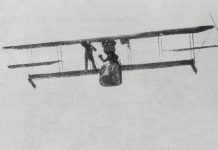A series of incidents at flying schools prompted a study into improving the dynamics between instructors and students.
The workload is high when you are learning to fly. The challenge is much greater if you are at a flying school in Australia but English is not your native language. On top of that, you may be experiencing difficulties adapting to a new culture.
This situation has led to misunderstandings between students and instructors and, in some cases, a steep cockpit authority gradient.
As more students come from overseas to learn to fly in Australia’s favourable weather and less crowded airspace, flight training schools need to learn new ways to improve communication and rapport with students and build and maintain a safety culture.
Human performance specialist Selina Fothergill is leading a team at CASA that is creating an educational program comprising four modules to address these challenges being faced by flying schools. The first one will teach students how to be more assertive in the cockpit and instructors how to respond. ‘The goal is to create a leadership environment where the student is happy to speak up and generate good crew resource management,’ she says.
Fothergill presented her research findings at the recent PACDEFF conference—the Pacific and Australasian Crew Resource Management (CRM) Developers and Facilitators Forum.
‘Flight training schools regularly recruit international students for their training programs,’ she says. ‘This has resulted in several discussions with CASA about non-technical skills such as communication training and safety culture. As well, the increase in student demand has changed the workload for instructors. They have shown interest in learning management strategies to deal with these issues.
‘We reviewed a number of incidents that keep recurring. They revealed safety culture and communications to be contributory factors in student events, hence the strong need for a continuing safety education focus and support in those areas.’
The flying schools reported issues with instructors communicating with cadets and with the students communicating with ATC.
‘These communication challenges tie into human factors and what we call crew resource management and good non-technical skills,’ she says. ‘So we looked at the perspective of communication techniques and how they can be improved.
‘The other issue that was coming through was that instructors had difficulty communicating safety culture and developing good rapport with their students initially.
‘A lot of the students coming into the schools to learn flying skills are quite young and they have not had a strong or long aviation safety background. They have not come across terms like safety culture or just culture in the past. Therefore, the schools are struggling with trying to teach them the concept of just culture and safety culture and why teaching non-technical skills is advantageous, when the students have got funding at their schools for only a short time.’
After the first round of discussions helped frame the terms of reference for the project, Fothergill went back to flying schools in Victoria to gauge the key issues for instructors and students in managing communication and CRM.
‘They gave us a lot of qualitative data,’ she says. ‘Trying to develop rapport between an instructor and student can be challenging—there may be an age gap, often there are cultural differences and English is a second language for a lot of the students, so they are grappling with developing communication and trust with the instructor, when they already have a high workload.
‘The other thing that came out of the discussions were the challenges faced by students when communicating with ATC. Just about every pilot I have spoken to says the first time they spoke to the tower was really stressful and intimidating. They are competing with every other aircraft on the frequency and they have to get their comms correct because it is quite precise phraseology. So that is stressful and these students are doing it in a second language.
‘Also, they come from cultural environments where they are not used to getting a lot of praise. They told us it’s a strange environment in Australian schools because they are not used to the reward system of encouragement.
‘They also tend to lose their confidence if they are criticised frequently. For instance, they told us if the instructor said they had done three things wrong in a row in terms of flying the aircraft, they just wouldn’t speak up after that because they didn’t want to get into any more trouble. That would lead to a situation where they are so focused on what they are trying to do—what we call cognitive tunnelling—that they are gripping the controls, just trying to do their one task, and then they don’t have any more attentional capacity for things like communication and safety.’
On a visit by Fothergill’s team to another operator, instructors said that, along with having difficulty communicating with students, they were also unsure how to best measure the students’ non-technical skills while they are flying.
‘The instructors don’t really know what to do when the student does not give information—if they are not communicating and not giving any non-verbal cues,’ she says. ‘If the student is too busy to tend to radio calls, the instructor probably has an idea the student is getting stressed, but they don’t really know how to measure that. What typically happens is they get to the point where they just push the non-technical skills aside and focus on the technical instructing.
‘The danger in pushing non-technical skills aside is then you’re going to get human error—and that’s been the case in every incident with the students.’
The first module—on assertiveness training—has been given a test run at two flying schools in Victoria. As a result of the feedback, the team has decided to present the material differently to instructors and students.
‘The instructors found our information quite beneficial because it pulled together a lot of research-based techniques on how to be assertive and how to respond to assertive students,’ Fothergill says. ‘However, we received a lot of feedback that the students would probably benefit more from real-world examples and scripts and role play about how to actually talk, rather than research techniques in a PowerPoint presentation.
‘Our intention is to put together the four modules for instructors and students and then deliver them to the key safety personnel in Victorian flight training schools, so that might be the non-technical skills training manager or the safety manager. If all goes well with the feedback from them, our plan is to roll it out to all the other flight training schools nationally next year.’
The other modules cover safety culture and communications, behavioural competency measurement inflight and instructor heuristics for behavioural change.
The team’s 10 research-based strategies that can be used for flight deck communications between instructors and students at flight training schools:
- Use clear, concise and unambiguous communication
- Clarify goals, roles and responsibilities
- Anticipate and respond to crew members’ needs
- Demonstrate empathy, show respect and tolerance
- Engage others in planning and allocate fairly and according to ability
- Ask what you could have done differently
- Praise others when they do well
- Decide that you want to be assertive rather than aggressive or passive,
and commit to the change - Use assertive language such as ‘I feel … ’ and ‘I think … ’, which takes responsibility for and explains exactly how you are feeling, rather than aggressive language such as ‘You always … ’ and ‘You … ’, which blames the other and escalates conflict
- Expand Crew Resource Management training to include role playing or simulator exercises where students voice their concerns and instructors develop a leadership style that supports student assertiveness.






Comments are closed.